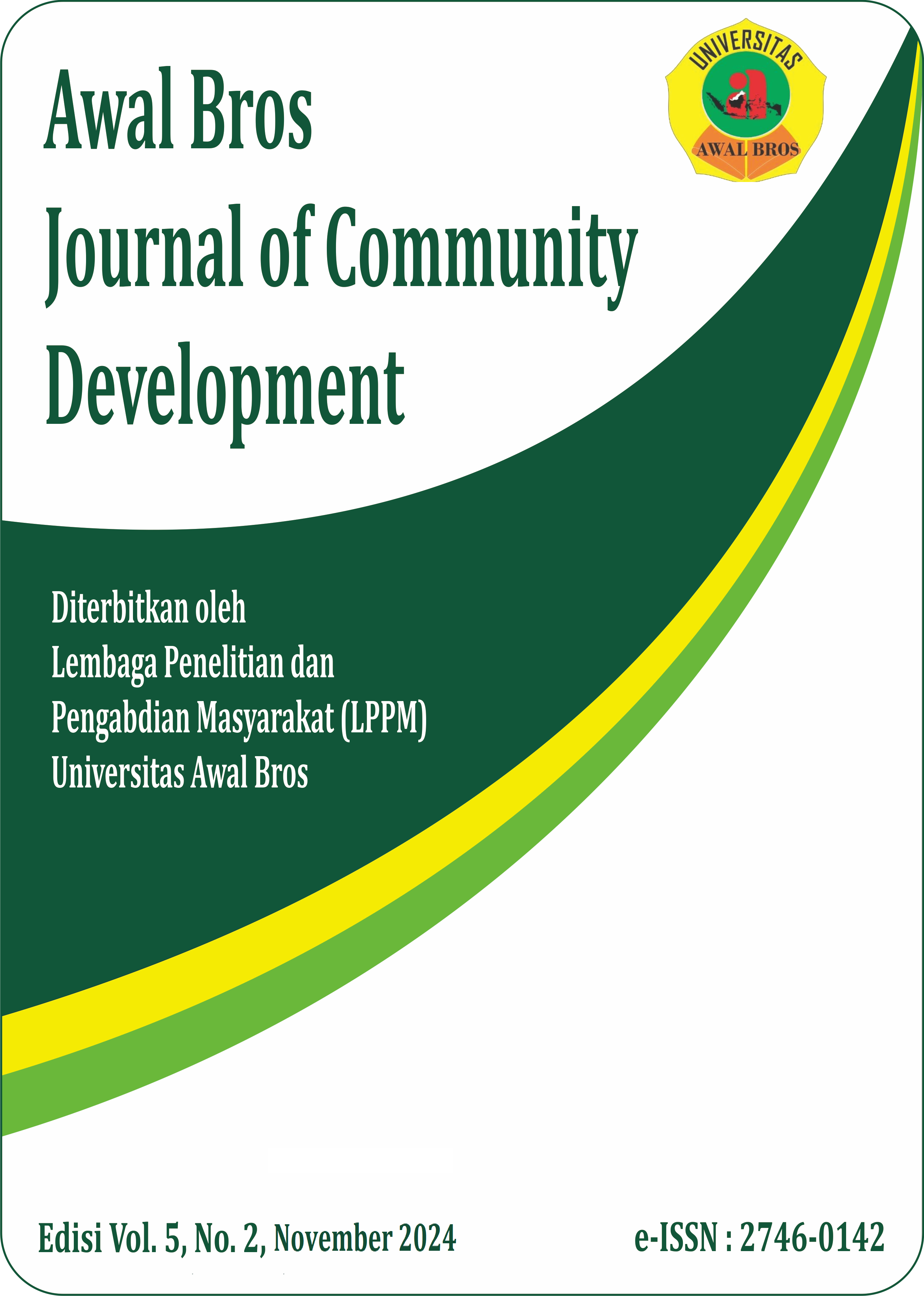PHYSIOTHERAPY EDUCATION ON MANAGING THE RISK OF LOW BACK PAIN IN PREGNANT WOMEN AT POSYANDU TERATAI, BAMBU KUNING SUBDISTRICT, REJOSARI HEALTH CENTER WORKING AREA
DOI:
https://doi.org/10.54973/abjcd.v5i2.605Keywords:
Low Back Pain, Pregnant Women, Physiotherapy Education, Community Service, Stretching ExerciseAbstract
Low back pain (LBP) is a common complaint among pregnant women, often caused by postural changes, weight gain, and hormonal fluctuations during pregnancy. This condition can significantly affect quality of life and daily functioning, yet community-based educational interventions remain limited. This community service program aimed to provide physiotherapy education to prevent and manage pregnancy-related LBP, particularly in local health post settings. The program was conducted at Posyandu Teratai, Bambu Kuning Subdistrict, under the Rejosari Health Center, in Pekanbaru City. The methods included educational sessions, practical stretching demonstrations, pre-test and post-test evaluations, and the distribution of digital materials for home-based practice. The results showed a significant increase in participants’ knowledge, with test scores improving from 60% to 85%. Participants showed strong enthusiasm during the practical sessions and reported that the techniques were helpful and easy to apply. Feedback included requests for broader content and more varied methods such as tutorial videos. As a follow-up, participants were encouraged to form peer support groups and continue practicing independently using the provided materials. In conclusion, this educational program effectively improved pregnant women’s knowledge and skills in managing LBP and made a positive contribution to maternal health through a structured, community-based approach.
Downloads
References
Wang SM, Dezinno P, Maranets I, Berman MR, Caldwell-Andrews AA, Kain ZN. Low back pain during pregnancy: prevalence, risk factors, and outcomes. Obstet Gynecol. 2004;104(1):65–70.
Sabino J, Grauer JN. Pregnancy and low back pain. Curr Rev Musculoskelet Med. 2008;1(2):137–41.
Fast A, Shapiro D, Ducommun EJ, Friedmann LW, Bouklas T, Floman Y. Low-back pain in pregnancy. Spine (Phila Pa 1976). 1987;12(4):368–71.
Moore MK. Upper crossed syndrome and its relationship to cervicogenic headache. J Manipulative Physiol Ther. 2004;27(6):414–20.
Wu WH, Meijer OG, Uegaki K, Mens JM, van Dieën JH, Wuisman PI, et al. Pregnancy-related pelvic girdle pain (PPP), I: Terminology, clinical presentation, and prevalence. Eur Spine J. 2004;13(7):575–89.
Franklin ME, Conner-Kerr TA. An analysis of posture and back pain in the first and third trimesters of pregnancy. J Orthop Sports Phys Ther. 1998;28(3):133–8.
Mogren IM. Previous back pain and risk of back pain during pregnancy: a prospective study. Spine (Phila Pa 1976). 2005;30(17):E556–60.
Ostgaard HC, Andersson GB, Karlsson K. Prevalence of back pain in pregnancy. Spine (Phila Pa 1976). 1991;16(5):549–52.
Kluge J, Hall D, Louw Q, Theron G, Grove D. Specific exercises to treat pregnancy-related low back pain in a South African population. Int J Gynaecol Obstet. 2011;113(2):187–91.
Katonis P, Kampouroglou A, Aggelopoulos A, Kakavelakis K, Lykoudis S, Makrigiannakis A, et al. Pregnancy-related low back pain. Hippokratia. 2011;15(3):205–10.
Chibnall, J.T., 2008. Low back pain in pregnancy: A review of the literature. Journal of Pain Management 1, 231-239.
Dijkstra, A., 2015. Physiotherapy in pregnancy: A review of the evidence. Physiotherapy Theory and Practice 31, 1-10.
Moller-Nielsen, J., 2010. The role of physical activity in the prevention and treatment of low back pain during pregnancy. Scandinavian Journal of Medicine & Science in Sports 20, 203-210.
Vleeming, A., et al., 2008. The pelvic girdle: An approach to the clinical understanding of lumbopelvic pain. Elsevier, Amsterdam.
World Health Organization (WHO), 2020. Physical activity and health in pregnancy: A guide for healthcare providers [WWW Document].













